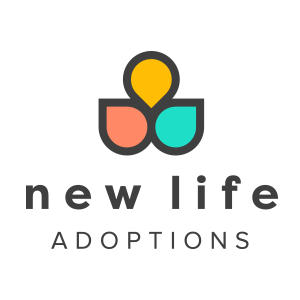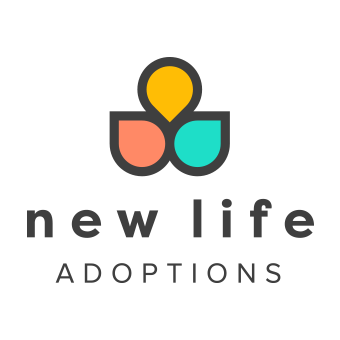DNA testing is opening doors for those who have been impacted by adoption in ways that no other form of searching can. It brings people together outside of adoption agencies, without intermediaries, and it can lead to a puzzle of figuring out who is who on the family tree.
As the Post Adoption Social Worker at New Life Adoptions, I have heard many stories about how DNA testing has impacted birth parents and adopted persons. While some of these stories are filled with happy reunions, not every situation plays out the same. There are some important things to consider before pursuing DNA testing to be prepared for the possible outcomes. While anyone can utilize DNA testing to find family members, this post focuses on the process for those who were adopted.
Reasons for DNA testing
Before going down the road of DNA testing, it is important to think through what you want to get out of this process. What is your purpose in completing a DNA test? Are you looking for medical information? Do you want to learn about your heritage and where your ancestors came from? Do you hope to find your birth family? How do you expect this to go? Evaluating your desires and setting your expectations for the process are the first steps in being prepared for the journey ahead.
Managing Your Expectations
Many people can be disappointed through the search and reunion process whether or not they use DNA testing to search for their birth family. This process does not always go the way we expect it to, and it can be difficult to navigate all of the emotions involved. The best thing to remember when starting the DNA testing process is to manage your expectations along the way. Remember that things won’t always go according to plan, your thoughts and emotions may change throughout the process, and others may want a different level of contact than you. All of these things are OK! Do your best to be flexible throughout the process and take as much time as you need before moving on to the next step.
Medical Information
If you are interested in your medical history or information about your heritage but are not ready to pursue connections with your birth family, consider what your goals are before jumping in to DNA testing. If you are looking for medical information, ask your doctor what DNA testing options are available through your clinic. In Minnesota, some clinics offer DNA testing for medical history purposes for those who were adopted without all of the family connections that DNA testing services provide. This may even be covered by your insurance. Some DNA testing services offer more information about heritage than others, so if you decide to pursue testing on your own, research the different DNA testing services available to find the best fit for the information you are looking for.
Boundaries
Throughout this process, you can control what happens. Although you cannot decide how others will react or what they will choose to do, you can decide what you are comfortable with and stick to it. Think through your boundaries ahead of time and include trusted family members or friends in your process. If anything comes up that you are not comfortable with along the way you can choose to take a break or stop the process altogether. If you connect with birth family members who want more contact than you are comfortable with, you can always say “no” to that contact. While it is important to respect the boundaries of others throughout this process, don’t ignore your own boundaries along the way.
Navigating Possible Connections
DNA testing services do not always provide a perfect match. These services can show possible relative connections with labels that may or may not be correct. The family connections provided are determined by how closely your DNA matches theirs. Often, it can take navigating the connections on your family tree to find the person you are looking for. In some situations, birth parents and adopted persons are connected, only to find out later, that it was a false match. Therefore, it can be important to confirm any significant connections when possible. Try to match as many details known by both parties as possible (such as birth dates, the agency used for the placement, etc.) to confirm that you were correctly reunited. Contacting the agency, attorney, or county that was involved in your adoption may also help confirm if these are accurate matches, but depending on the state and its adoption laws, the information that can be confirmed or released may be limited. If you were adopted in Minnesota and don’t know the agency, attorney or county that facilitated your placement, you can contact our Post Adoption Department as we may be able to direct you on where to find this information.
Contacting Others
When considering how, when, or who to contact through these possible connections, keep in mind that some people involved in an adoption may not want to be found. Remember this when you are reaching out to others because they may not be open to contact. Although this may be difficult to understand and hurtful to experience, it is important to respect the boundaries of others as you reach out. Sometimes people need time to process and may be open to contact in the future, while other times they are not willing to reopen that door into their past. Another thing to keep in mind is that others in your birth parents’ family may not know about the adoption. Reaching out may be a big shock to family members and may open up many questions for your birth parents from their family members. Be mindful as you reach out that this may bring up a lot of emotions for those who were not expecting a reunion.
Tips for DNA testing
While the DNA testing process can have ups and downs or unexpected turns, it can be a great way to find birth family members, especially when other options have not worked out. Following the tips below can help you on your journey.
- Be prepared. Look at the different DNA testing services available to see what each one offers. Choose one or more that offer the information you hope to gain from your DNA testing process. If you hope to get connected to your birth family, it may help to “fish in multiple ponds.” You can only get connected to those who use the same DNA testing service as you. If you use multiple services it can open up more possible connections.
- Get support. Let your family and friends know what you are doing, how you hope it will turn out, and what you are learning in the process. Getting support from those around you is key.
- Be mindful when reaching out to others. They may not know about the adoption or may not be open to contact. Opening a message from you may be a shock and they may need time to process before responding.
- Be respectful of each person’s boundaries and willingness to share information. This means sticking to your own boundaries throughout the process as well. You can always share more information in the future, but once information is shared it cannot be taken back.
- Be open to this process not unfolding exactly how you envision it. There will be ups and downs along the way. You may run into surprises, both positive and negative, that you did not anticipate. It is okay to take time to process throughout this journey and reassess your expectations.
There are so many facets to DNA testing and adoption that it can be difficult to cover them all. For more information or to talk through additional considerations, contact our Post Adoption Department.




